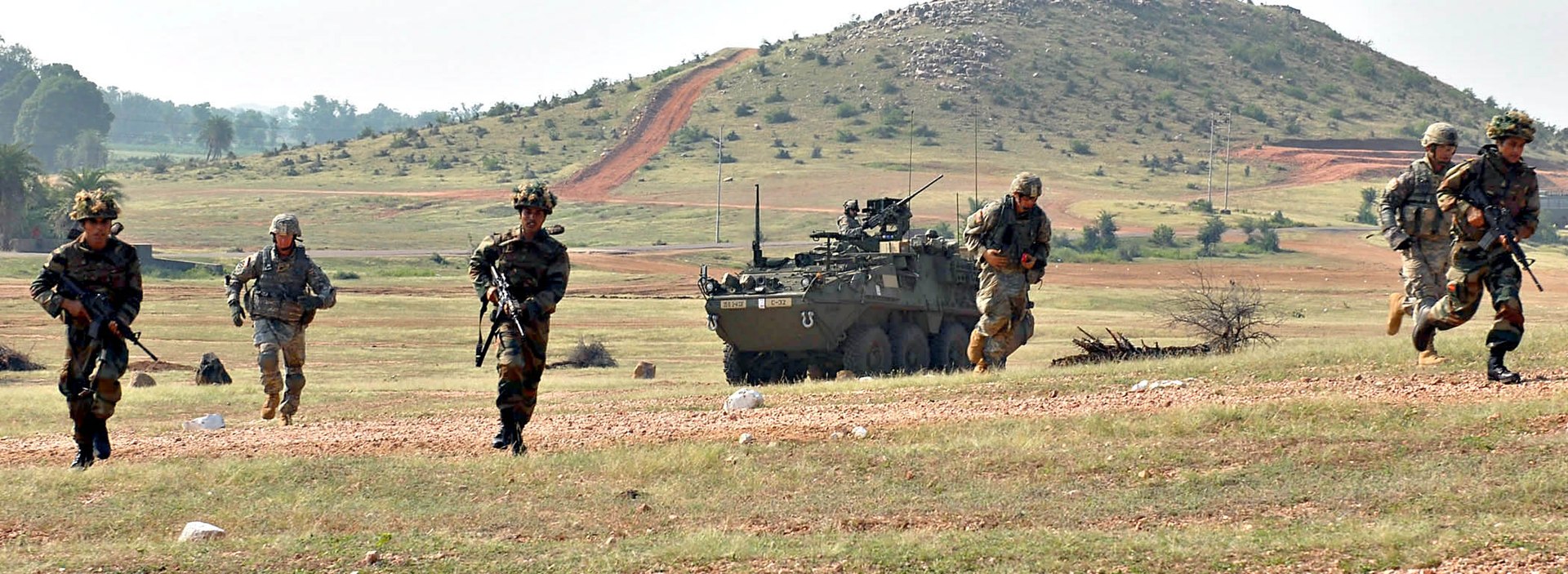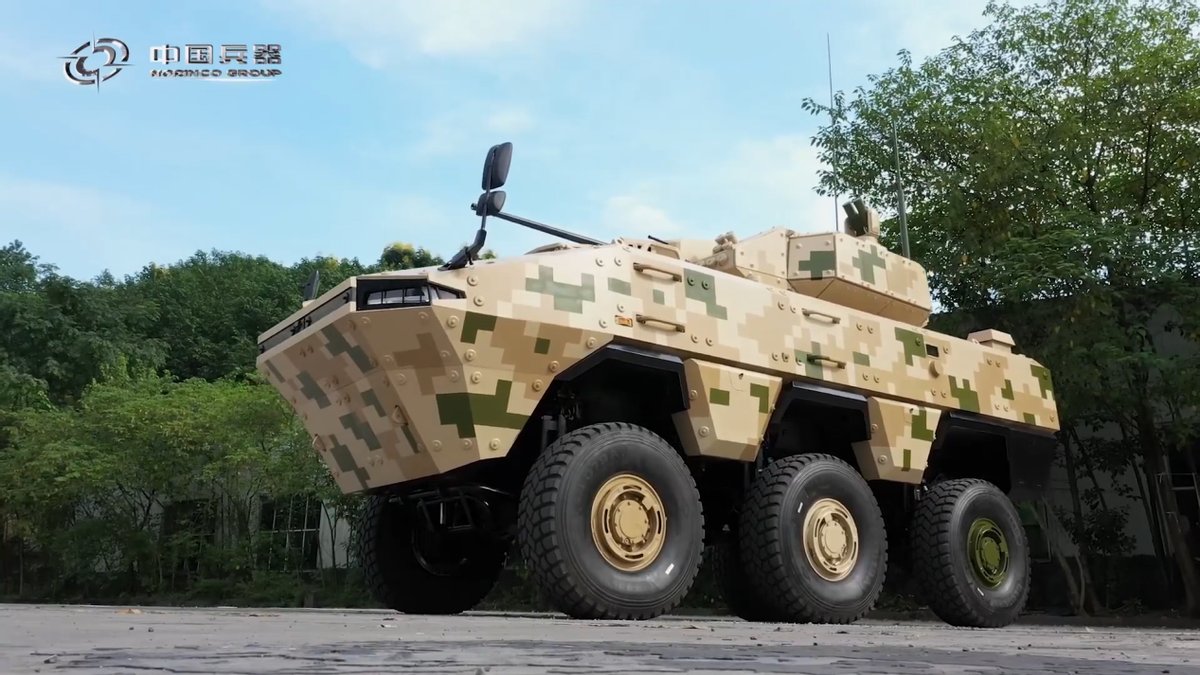India is prepared to evaluate the US-made Stryker Armored Fighting Vehicle (AFV) to enhance its capabilities against potential threats along its northern and western borders. The AFV has been used extensively in conflicts globally, including most recently in Ukraine.
According to reports in Indian media, the Indian Army will soon begin testing the US-made Stryker armored infantry combat vehicles in the deserts and high-altitude Ladakh. According to sources in the defense establishment, the Indian Army seeks to acquire roughly 530 armored fighting vehicles.
After the 2+2 ministerial consultations in November 2023 between the foreign and defense ministers of India and the US, a senior US defense official announced plans for the US and India to collaborate on producing Stryker AFVs for India. While no official agreement has been signed yet, sources accessed by Indian media suggest that the negotiations are at an advanced stage.
For instance, last month, the Indian National Security Advisor (NSA) Ajit Doval and the visiting US National Security Adviser Jake Sullivan discussed the AFVs.
India is expected to go for a limited off-the-shelf purchase of Strykers through the Foreign Military Sales (FMS) route. Following this, the joint production of the vehicle will likely take place in India. The production of this weapon system would be carried out under the US-India Initiative on Critical and Emerging Technologies (iCET).
The latest report, citing unnamed sources, noted that Stryker is currently under consideration because Indian vendors are unable to satisfy the qualitative standards (QR).
The Stryker also has some technical limitations that are being assessed. As previously reported by EurAsian Times, India had expressed concerns about the Stryker being underpowered. Experts flagged that the 350-horsepower Caterpillar C7 engine may encounter operational challenges due to the thin air at high altitudes.
To better suit the Indian Army’s needs and to make the deal sweeter, the US offered to replace the engine with a Cummins-developed Advanced Combat Engine with 750 horsepower, which is expected to give the Stryker a significant upgrade.
With an eye on China’s People’s Liberation Army, which remains stationed near the disputed border, India needs an advanced and preferably battle-tested armored combat vehicle for its soldiers in high-altitude terrains like Eastern Ladakh.

If the agreement goes through, it would be a massive boost to the Indian Army’s capability. It has been on the lookout for an ACV since 2020, the year when it got embroiled in a fresh standoff with China at the Line of Actual Control (LAC).
The Indian Army is looking to modernize its BMP-II (an amphibious infantry fighting vehicle introduced in the 1980s) of Russian origin and replace it with wheeled and tracked Infantry Combat Vehicles.
The Strykers are likely to be deployed in high-altitude areas along the border with China in regions like Eastern Ladakh and Sikkim. After the conflict in 2020, India has been emphasizing the necessity of light tanks and more armored combat vehicles to maneuver the challenging high-altitude terrain where Indian Army troops faced mobility difficulties.
The opinion about the Stryker in India remains divided. One section of military experts contend that the vehicle would bolster India’s arsenal against the PLA.
However, there is widespread discontent among military watchers and retired officials. Some experts have noted that the deal would be a bad idea at every level, considering India has the indigenous capability for it: the Wheeled Armoured Platform (WhAP). It has reportedly tested at high altitudes, and the Indian Army was impressed by its capabilities.
Despite that, Indian defense sources have noted that comparing the WhAP to ICVs is not appropriate. They asserted that the product is devoid of sight systems, fire control systems, or even weaponry.
Nevertheless, it should be mentioned that the WhAP has undergone numerous modifications and has demonstrated its capabilities with a fire control system, multiple turrets, and a sight system.
Several analysts have stated, rather categorically, that the Indian government is justifying an unwarranted import when it already has a potent WhAP built locally by the Indian defense industry.
According to reports, if the Stryker is approved, its capabilities will need to be changed to accommodate high-altitude regions like eastern Ladakh.
Strykers To Strike China
The proponents of Stryker emphasize that versatility, mobility, and flexibility would make it a suitable option for India, which has been seeking to upgrade equipment for deployment against China.
‘Raptor Salad’ For Lunch! US F-22 Raptor Outgunned, Outmaneuvered By German Eurofighter Typhoon?
Some believe there are uncanny similarities between the US Stryker armored vehicle and a Chinese armored vehicle known as the “VN22”. As observers have already pointed out, the VN22 almost exactly resembled the Stryker, with the exception that it has six wheels instead of eight.
According to reports, the vehicle has a weapons mount on top and is rectangular with protruding corners or edges. Another picture of the VN22 seems to show a gun set atop a rotating turret. Further, the mission scope of the vehicle as described in Chinese closely matched the descriptions given by ground vehicle commanders in the US Army.

Combatant Commanders urgently require a brigade that can be quickly and strategically deployed anywhere in the world and be prepared for combat, and Indian officials believe that the Stryker fulfills this need. Compared to current armored vehicles and tanks, it is substantially lighter and easier to move.
More importantly, the Stryker is much lighter than large combat vehicles like the Indian arsenal’s Russian-made T-72 and T-90 tanks, which are heavier and more difficult to maneuver.
Strykers can operate in snow, mud, and sand but are not as strong or defensive as tanks. Their lack of tracks slightly constrains their off-road mobility.
The vehicles are also combat-tested. It was deployed by the US Army in Iraq between 2003 and 2011, in Afghanistan between 2001 and 2021, and even in interventions against the Islamic State. More recently, however, these vehicles saw combat in Ukraine against the Russian forces.
- Contact the author at sakshi.tiwari9555 (at) gmail.com
- Follow EurAsian Times on Google News




